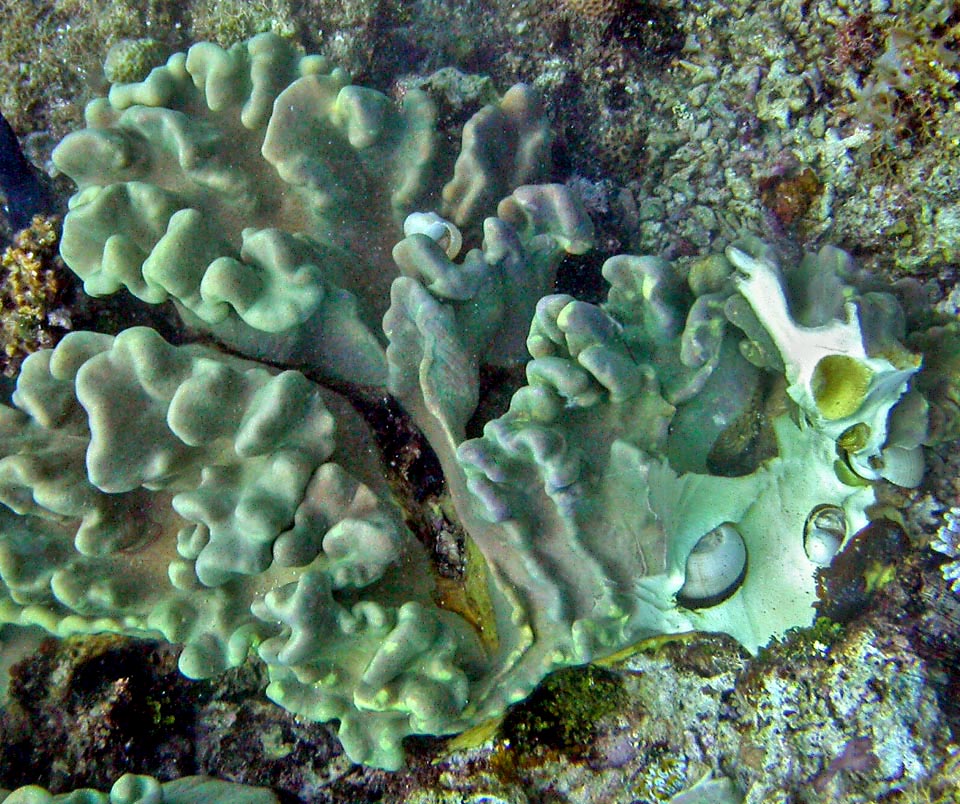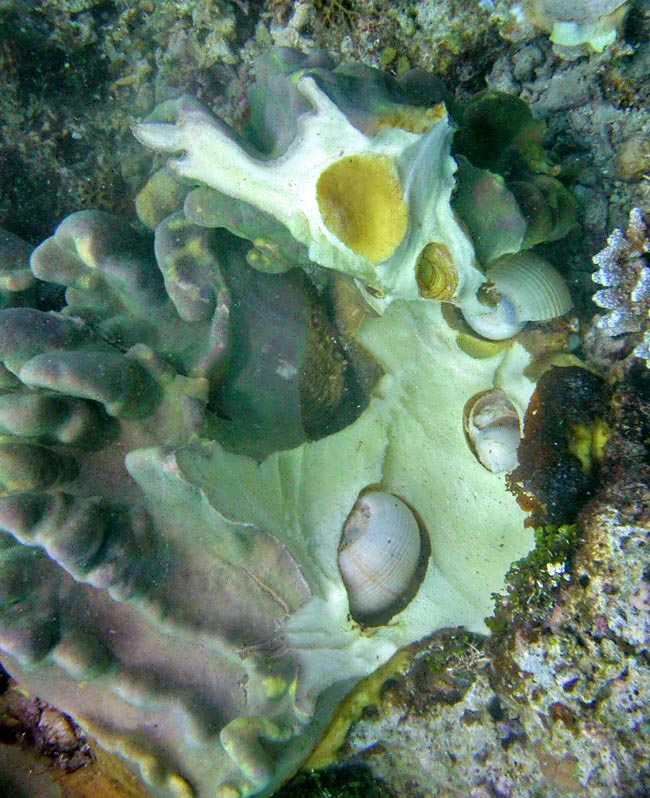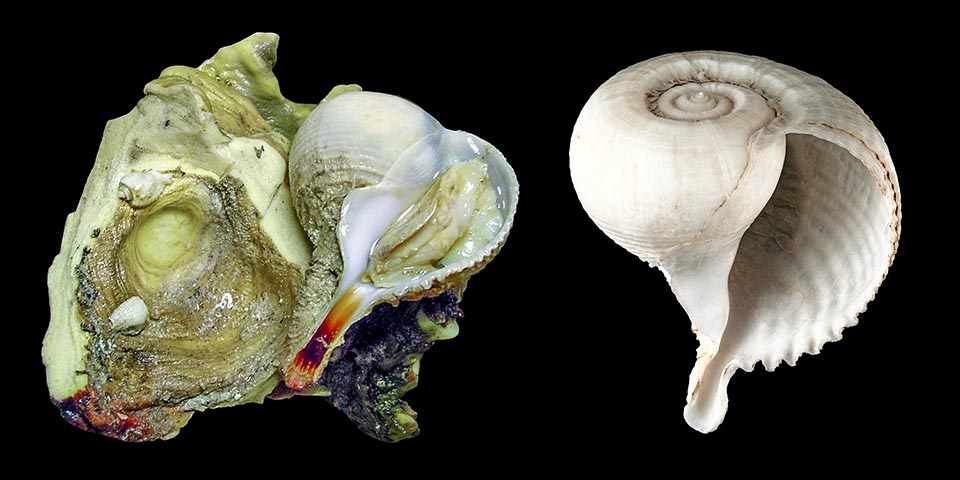Family : Muricidae

Text © Prof. Marco Oliverio

English translation by Mario Beltramini

Rapa rapa is a common tropical Indo Pacific mollusc. It lives in halls inside alcyonarians of the genera Lobophyton and Sarcophyton © Stefano Schiaparelli
The Coralliophilinae represent a subfamily of the big family Muricidae. This family of Neogastropoda includes species exclusively carnivorous, predators with an ample variety of food targets, classified in about 6-8 subfamilies. The subfamily Coralliophilinae includes about 250 species, all rather sedentary, that invariably nourish of anthozoan cnidarians (hexacorals and octocorals).

Close-up of an infested Lobophyton at Vanuatu. We note three big females in the open galls © Stefano Schiaparelli
Zoogeography
The Coralliophilinae are distributed in the waters of the whole globe, excluding the polar regions.
The genus Rapa includes two known species Rapa rapa (Linnaeus, 1758) and Rapa incurva (Dunker, 1852), both relatively common in the Indo-Pacific Province, even if, living inside the large Alcyonaria of the genera Sarcophyton and Lobophyton, it is difficult to observe the living specimens.
Morphophysiology
Rapa rapa lives in galls inside the tissues of the alcyonarians (octocorals) in a sort of endoparasitic relation.
Feeding is probably at the expense of the coral (other species of coralliophilines can subtract the predigested food from the gastric cavity of the corals).
It is thought that it has the capacity of inactivating the cnidocytes of the alcyonarians and/or of detoxifying the poisonous cocktail of these cnidarians.
Ethology-Reproductive Biology
It is characterized, like all coralliophilines, by a sequential proterandrous hermaphroditism (that is, changing sex during the life): the youngest individuals (up to a shell length of 10 mm) are males, and live protected by the ample shell of the female (that reaches 120 mm and more of length).
The female holds the fertilized eggs in small sacs (egg–capsules) in the ample cavity of the mantle during the whole embryonic development, to then free the larvae in water.
Like the congeneric Rapa incurva, it is has a planktotrophic larva (that is, feeding on phytoplankton during the larval life) with a rather long pelagic life that allows the species to keep a high connectivity among the populations.

Left: dissected gall showing two small males and a big female; right: empty shell of a female © Marco Oliverio (left) © Giuseppe Mazza (right)
Synonyms
Rapa papyracea (Lamarck, 1816); Rapa pellucida Röding, 1798; Rapa penardi Montrouzier, 1856; Rapa striata Röding, 1798; Rapa tenuis H. Adams & A. Adams, 1858.
→ To appreciate the biodiversity within the MOLLUSCS please click here.
